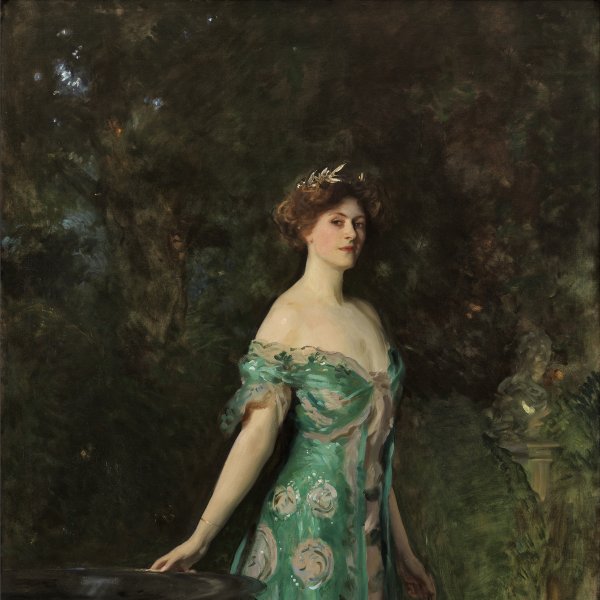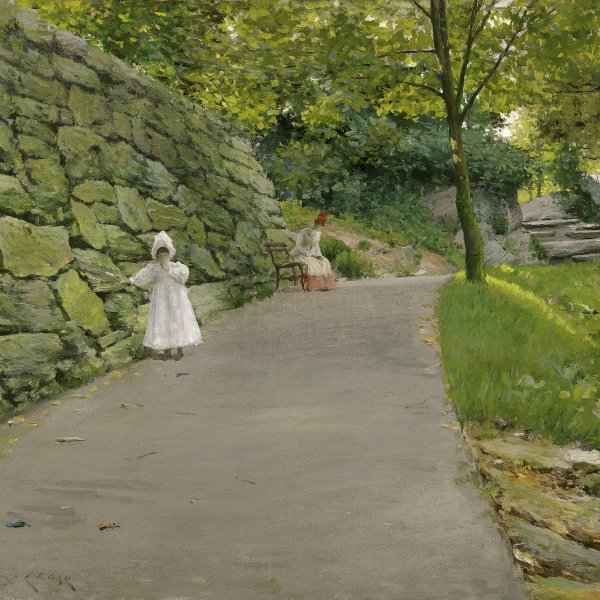Venetian Onion Seller
The American painter John Singer Sargent trained in Italy and France, where he met leading artists such as Whistler and Monet. Sargent was a tireless traveller whose interest in the world took him to a wide range of places in Europe and North Africa where he painted landscapes and scenes of daily life and customs.
Between 1880 and 1882 Sargent spent two periods in Venice, during which he executed studies of local people and picturesque corners of the city. This unidentified onion seller is one such work. The model is posed, three-quarter length, with her hand on her hip and a large string of onions hanging down over her shoulder. The olive toned skin of her face, further darkened by her location in the shadow, creates a contrast with the white of her skirt and the onions. A sketchily painted view of Venice can be made out through the window behind her at the upper right, but Sargent places all the emphasis on the city’s most humble inhabitants.
CM
As with some of his Spanish works, these early Venetian scenes transport us to a world of shadows full of literary resonances. The Venetian Onion Seller in the Museo Thyssen-Bornemisza was painted during one of the artist’s first two visits to Venice. It depicts the single figure of a young woman against a geometrically structured background formed by the wall and window in the upper right corner, which provide a Venetian view of a canal. In the interior, the palette of dark colours, which contrast with the paleness of the woman’s skirt and shawl, help convey an atmosphere of mystery. The whole composition, which is very loosely executed, reflects the influence of Velázquez’s painting, which Sargent had so admired during his visits to the Prado, and also bears something of the hallmark of Franz Hals’s portraits, which he had seen during his trip to Holland. The writer Henry James, who professed great devotion to his friend Sargent’s painting, particularly praised the onions strung over the model’s shoulder, stating that “these small vegetables, enchantingly painted, look as valuable as magnified pearls.”
The girl, whose beauty does not conceal her working-class status, bears a certain resemblance to the model for A Street in Venice, who poses with her hand on her hip and displays the same taciturn, elusive gaze. Katherine Manthorne notes that she may be Carmela Bertagna, one of Sargent’s favourite models, owing to her resemblance to the portrait he painted of Bertagna around 1879.
However, it seems unlikely that this girl of Spanish origin, a model of Sargent’s in Paris, should appear in the Venetian paintings. As documented by Richard Ormond, Monsieur Lemercier, to whom Sargent dedicated the painting, was doctor Abel Lemercier, a physician by profession and the owner of the building at number 73 rue de Notre-Dame-des-Champs in Paris, where Sargent’s studio was.
Paloma Alarcó









